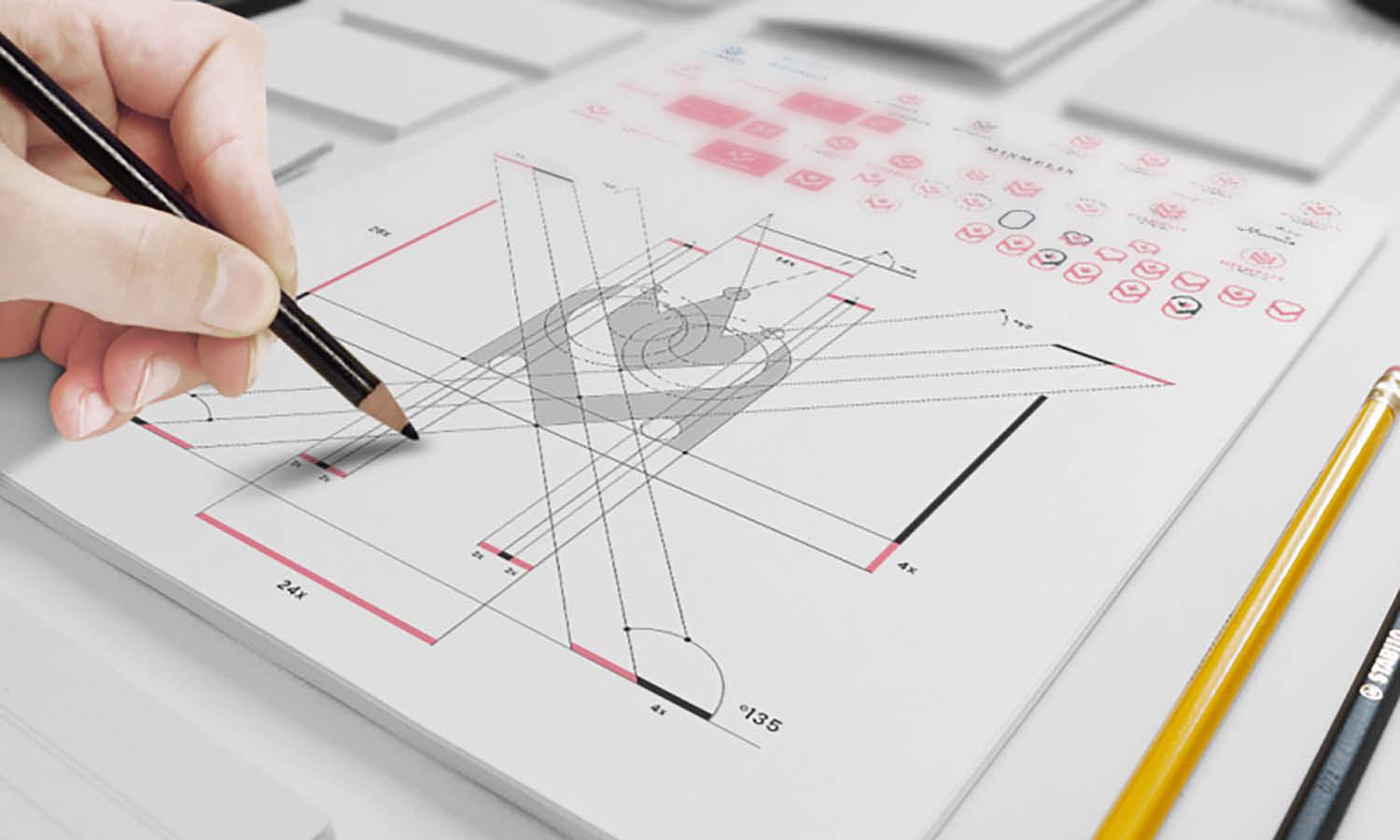How to Write A Proper Project Management Plan

Embarking on a new project can be a daunting task without a clear roadmap to guide the journey. This is where a well-structured project management plan becomes indispensable. Serving as the backbone of any successful project, a project management plan outlines the strategy and detailed steps your team will follow to achieve the project objectives. It provides a comprehensive overview of everything from scope and resources to schedules and risk management. By setting a solid foundation early on, you can enhance coordination among team members, manage stakeholder expectations, and ensure that the project progresses smoothly, on time, and within budget.
This guide will walk you through the essential components of creating a robust project management plan, ensuring you have the tools to tackle challenges head-on and steer your project to success. Whether you're a seasoned project manager or a novice looking to get a grip on the essentials, the insights provided here will equip you with the knowledge to draft a plan that aligns with both strategic goals and operational realities.
Define the Project Scope
The first step in creating an effective project management plan is to define the project scope comprehensively. This entails a detailed description of what the project is intended to achieve and, importantly, what it is not. A well-defined scope provides a boundary within which all work must occur, setting clear expectations for project stakeholders. Begin by identifying the key deliverables and the services or outcomes your project will provide. Outline the limitations and exclusions, which can prevent scope creep and ensure the project remains focused and manageable.
This part of the project management plan should also address the final objectives and any assumptions or constraints that could impact the project timeline, budget, or resources. A clear and concise scope not only aligns the team's efforts but also facilitates effective communication and understanding among all project participants. By solidifying the project's boundaries, you establish a framework for making informed decisions throughout the project lifecycle, enhancing your ability to deliver on commitments with precision.
Crafting a comprehensive project management plan is essential for the success of any project, large or small. A well-written plan not only outlines the roadmap to achieve the desired outcomes but also sets the foundation for effective communication, resource allocation, and risk mitigation. Whether you are a seasoned project manager or a novice in the field, understanding how to write a project management plan is critical. This guide will walk you through the steps necessary to create a detailed and functional plan that aligns with your project goals.
Identify Project Objectives
Identifying clear and actionable project objectives is crucial in the strategic planning of your project management plan. Objectives should be specific, measurable, achievable, relevant, and time-bound (SMART), providing a clear direction for the project and a benchmark for success. Start by understanding the primary purpose of the project and the benefits it aims to deliver to all stakeholders involved. Each objective should align with the broader business goals and drive the project forward in a meaningful way. This section should articulate the expected outcomes, how they will be measured, and the impact they will have on the business or project environment.
By setting SMART objectives, you create a motivational framework that empowers your team and provides a clear roadmap for achieving desired results. Additionally, these objectives form the basis for subsequent project planning activities, such as task allocation, resource management, and risk assessment. Ultimately, well-defined objectives ensure that every project activity is strategically aligned with the overall goals, enhancing efficiency and effectiveness in project execution.
Establish the Project Team
Assembling the right project team is a fundamental component of an effective project management plan. This step involves selecting individuals with the appropriate skills, expertise, and personalities to contribute positively to the project's goals. Begin by defining the roles and responsibilities needed to successfully execute the project. Consider the scope and objectives you've set to determine the skills and knowledge required. Each role should have clear responsibilities, helping to avoid overlap and ensure comprehensive coverage of all project needs. It's also crucial to consider the interpersonal dynamics of your team, as effective collaboration and communication are key to project success. Once roles are defined, select individuals who best fit these profiles based on their proven skills, past performance, and ability to work well in team settings.
Include a mix of skills that cover technical, managerial, and operational aspects of the project. Additionally, establish a leadership structure that supports the project manager with decision-making and authority. This structure should facilitate clear communication paths and efficient decision-making processes. By thoughtfully assembling a team, you set the project up for success from the start, creating a collaborative environment that can adapt to challenges and capitalize on opportunities.

Develop a Detailed Work Breakdown Structure (WBS)
Developing a detailed Work Breakdown Structure (WBS) is crucial for the meticulous planning and execution outlined in your project management plan. The WBS is a hierarchical decomposition of the total scope of work to be carried out by the project team to achieve the project objectives and create the required deliverables. Start by breaking down the project into major deliverable-oriented components. These components are then subdivided into smaller, more manageable tasks that can be easily assigned and tracked. Each level of the WBS increases in detail, providing a clear roadmap for project execution. This structure not only helps in estimating costs and resources more accurately but also aids in scheduling, risk management, and quality control.
Ensure that each element of the WBS is clearly defined and that all team members understand their responsibilities in relation to the overall plan. The WBS should be as detailed as necessary to ensure that no parts of the project are overlooked and should serve as the foundation for project scheduling and resource allocation. By organizing tasks in this structured way, you can monitor project progress systematically and make adjustments as needed, enhancing overall project management efficacy.
Establish Milestones and Deadlines
To effectively write a project management plan, establishing clear milestones and deadlines is essential. Milestones are key events or stages in the project that mark significant achievements or phases. They serve as checkpoints that help the team and stakeholders visualize progress and realign their efforts as needed.
Start by breaking down the project into major phases or segments, each with a significant outcome or deliverable. These phases could represent the completion of a major component of the project, such as the end of the design phase, completion of prototype testing, or the launch of a final product. Assign a specific, realistic deadline to each milestone based on the project timeline and the complexity of tasks involved.
It’s important to ensure that these milestones are achievable and spaced out evenly throughout the project timeline. This spacing provides regular feedback points for stakeholders and the project team, facilitating timely adjustments. Utilizing tools like Gantt charts can visually map out milestones against the timeline, making it easier to monitor progress.
Determine Resources Needed
When you write a project management plan, determining the resources needed is a crucial step. Resources encompass all the necessary personnel, technology, information, equipment, and financial capacity required to execute the project successfully.
Begin by analyzing the scope and objectives of the project to identify the types of resources required for each task and phase. Evaluate the skills and expertise needed among team members to ensure you have the right personnel on board. If gaps exist, consider hiring or contracting specialists who can fulfill these roles.
Technology and tools are also vital. Assess what software, hardware, or other technologies are needed to support the project tasks, such as project management software, collaboration tools, or specialized machinery. Additionally, review the information needs, including data access, research materials, and secure communication channels.
Equipment and materials required for the project should be listed and quantified. Ensure that you include any safety gear or special materials that may be necessary for specific tasks. Financial resources must be estimated accurately to cover all expenses without shortfall.
Allocate Tasks and Responsibilities
When you write a project management plan, allocating tasks and responsibilities is fundamental to organizing team efforts and ensuring accountability. This step involves assigning specific tasks to team members based on their skills, experience, and roles within the organization.
Begin by reviewing the project scope and the detailed work breakdown structure (WBS) you have developed. Identify each task that needs to be completed and determine the skill set required to accomplish it effectively. Assign tasks to team members who best fit these requirements, considering their current workload and expertise.
It's essential to communicate these assignments clearly and openly. Each team member should understand not only their tasks but also how their work contributes to the broader project goals. This clarity enhances personal responsibility and motivation.
In addition to individual tasks, designate responsible persons for each major project milestone. These individuals will oversee reaching these critical points, ensuring that the project stays on track and adheres to its timeline.

Develop a Budget Plan
Writing a project management plan requires a well-developed budget plan that outlines anticipated costs and funding sources throughout the project's lifecycle. A comprehensive budget ensures that the project has sufficient resources to reach completion without financial overruns.
Start by estimating costs for each phase of the project based on the work breakdown structure. Include direct costs like labor, materials, and equipment, as well as indirect costs such as administrative expenses and overhead. It is crucial to be as detailed and accurate as possible to avoid unexpected expenditures.
Next, identify funding sources. These could include internal funding, external investments, or other financial contributions. Ensure that the cash flow will be adequate to cover costs at each stage of the project.
Consider implementing a contingency plan within the budget to manage unforeseen expenses. Typically, a contingency allowance of 5-10% of the total budget is recommended, depending on the project's complexity and risk level.
Document all aspects of the budget plan in your project management plan. Include a timeline for when costs will be incurred and align this with your funding schedule. This alignment ensures that funds are available when needed, preventing project delays.
Plan for Risk Management
Effective risk management is a pivotal section of any project management plan. Identifying, assessing, and managing potential risks before they become problematic is crucial to the success of any project. Start by conducting a risk assessment meeting with key project stakeholders and team members to brainstorm possible risks that could impact the project. These risks can range from financial, legal, and technological issues to environmental and operational challenges. Once identified, evaluate each risk based on its probability of occurrence and the potential impact on the project. This evaluation will help prioritize the risks that need the most attention and resources.
Develop strategies for mitigating high-priority risks, including contingency plans to handle these risks if they materialize. These strategies may involve allocating budget reserves, adjusting project schedules, or modifying project scopes. Also, consider assigning risk owners who will be responsible for monitoring specific risks and implementing mitigation strategies as required. Keep a risk register to document all identified risks, their assessment, and response strategies.
This register should be a living document, regularly updated as the project progresses and as new risks emerge. Effective risk management not only minimizes the adverse effects on a project but also provides a clear path for recovery, ensuring project continuity and stability.
Review and Adjust the Plan Regularly
A dynamic project management plan is crucial for responding effectively to changes and challenges that arise during a project’s lifecycle. Regular review and adjustment of the plan are essential to maintaining its relevance and effectiveness. Schedule periodic review meetings with the project team and stakeholders to evaluate the progress of the project against the original plan. These reviews should assess whether the project objectives are being met and if the project is staying on schedule and within budget.
During these meetings, discuss any new challenges or opportunities that have emerged and consider their implications for the project. This is also the time to review risk management strategies and their effectiveness in mitigating identified risks. Based on these discussions, make necessary adjustments to the project plan, schedules, and resource allocations. Adjustments might include reallocating resources, shifting deadlines, or revising work processes to better suit project needs and external conditions.
Document all changes made to the plan and communicate them clearly to all project participants. This ensures that everyone understands the current state of the project and their roles within it. Regular reviews and adjustments not only help keep the project on track but also foster a proactive culture that can adapt to change, enhancing project resilience and success.
Conclusion
A well-crafted project management plan is essential for guiding your project from conception to completion. By systematically addressing each component—from defining scope and objectives to establishing teams and managing risks—you lay a solid foundation for project success. Regular reviews and adjustments ensure the plan remains adaptive to changing circumstances, maximizing efficiency and effectiveness. Remember, the strength of a project lies not just in its planning but also in its flexibility and the ability to respond to new challenges. Embrace these principles within your project management plan to steer your projects confidently towards their goals.
Let Us Know What You Think!
Every information you read here are written and curated by Kreafolk's team, carefully pieced together with our creative community in mind. Did you enjoy our contents? Leave a comment below and share your thoughts. Cheers to more creative articles and inspirations!
















Leave a Comment